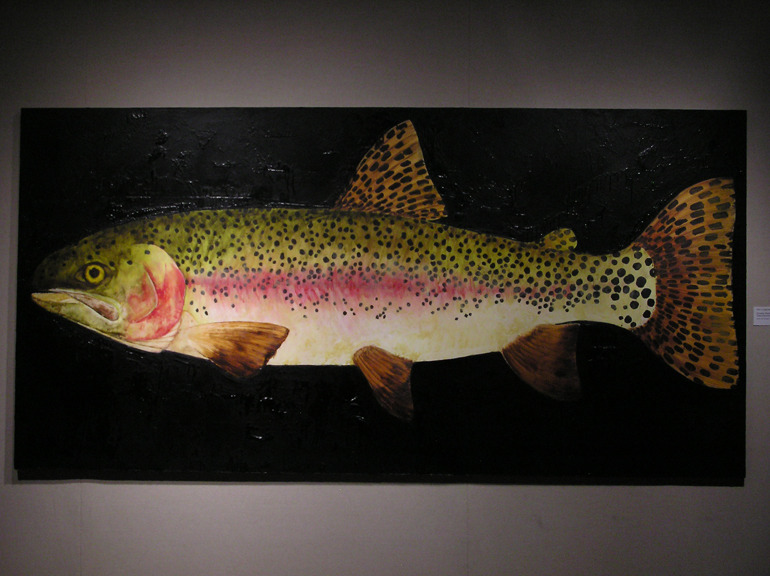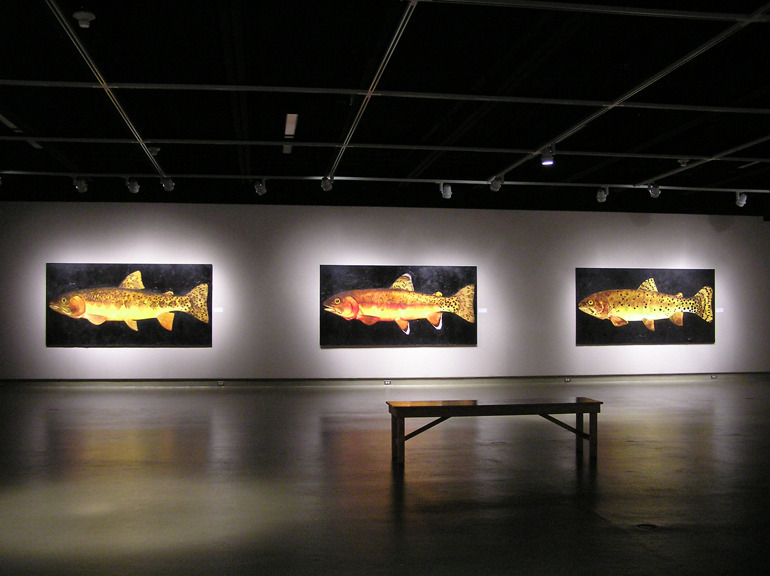Journal
Donald G. Longcrier, Artist Journal/Blog
Wooden Fish at Mainsite Contemporary Art
Wooden Fish at Mainsite Contemporary Art
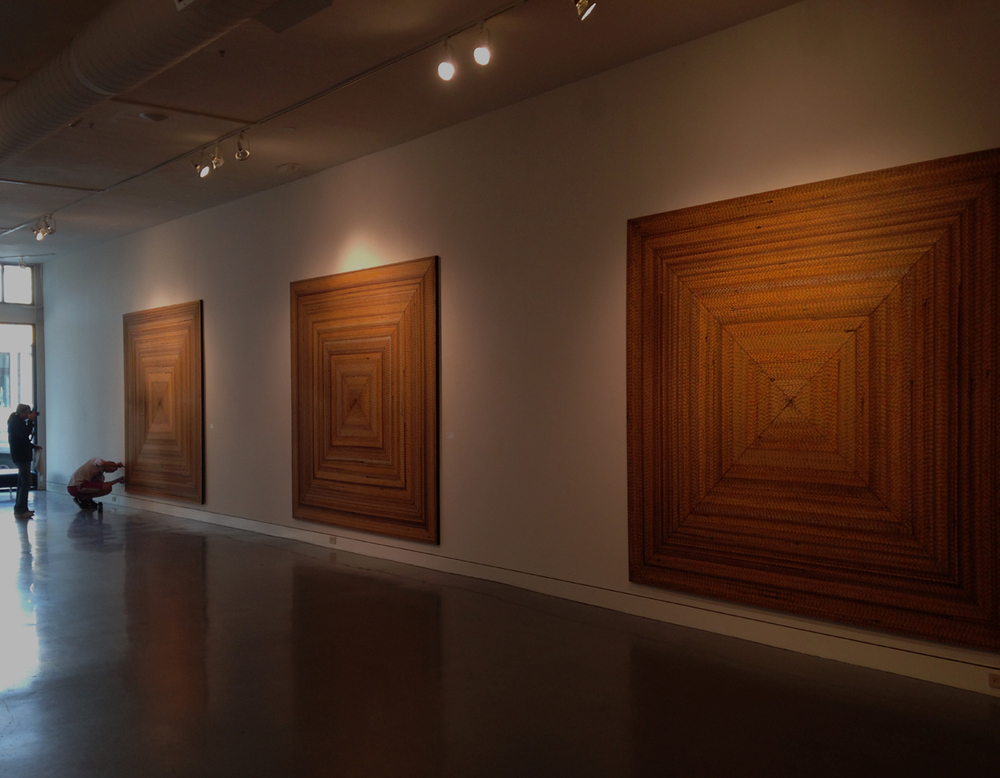
Installation View: Untitled (Tape Measures, 1, 2, & 3), Tape measures on wood.
108" H. x 108" W., ©2013
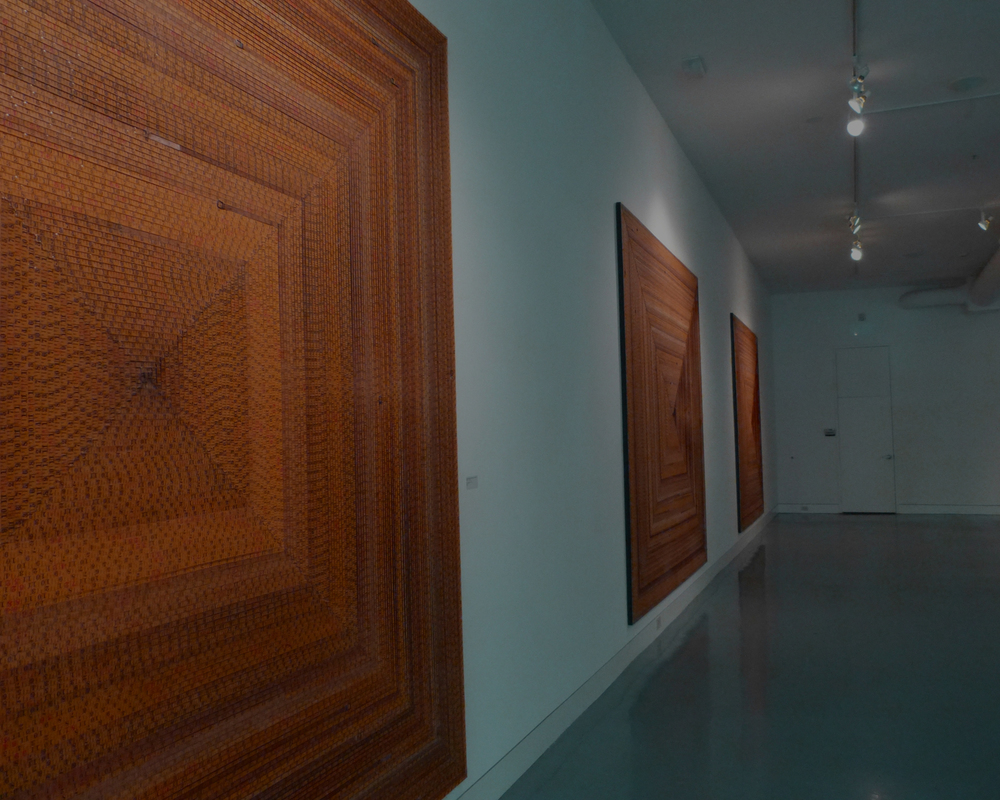
Installation View: Untitled (Tape Measures, 1, 2, & 3), Tape measures on wood.
108" H. x 108" W., ©2013
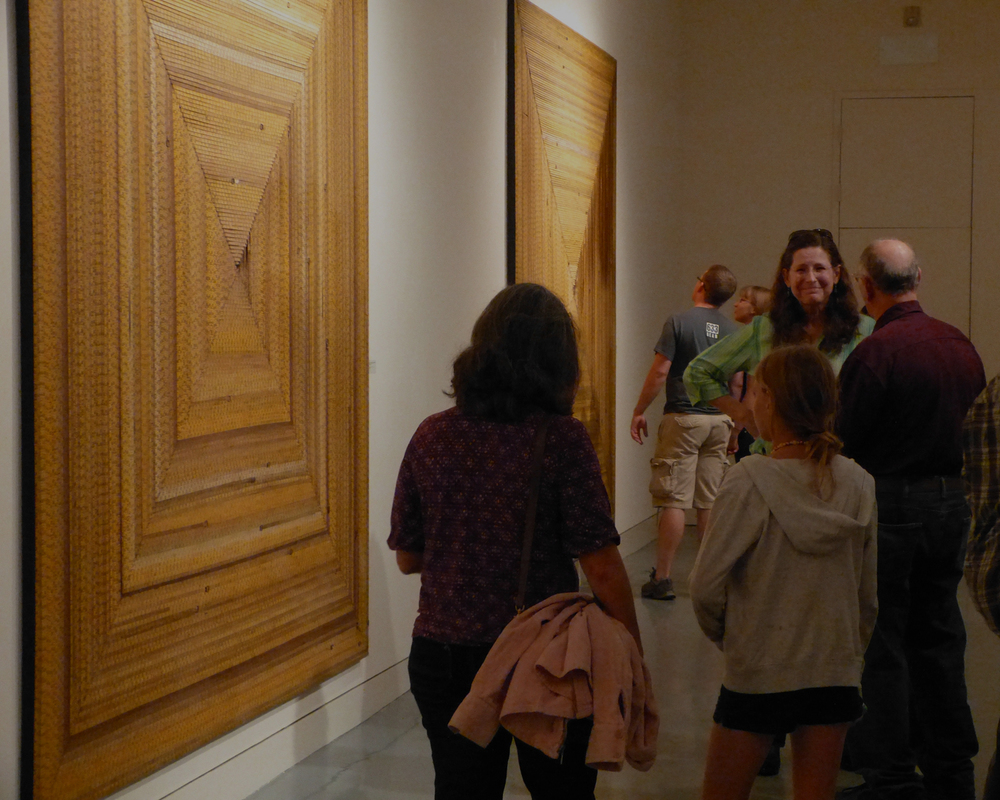
Wooden Fish at Mainsite Contemporary Art
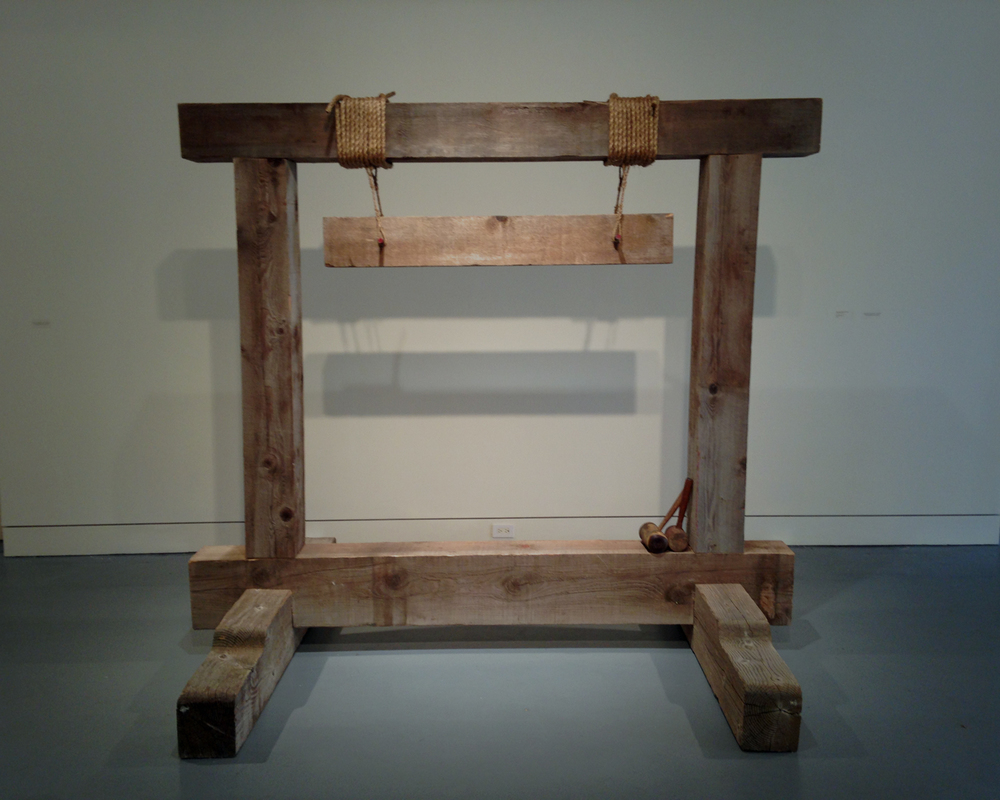
The wooden fish is a simple percussion instrument used in some Buddhist traditions to maintain a rhythm while reciting sutras and Buddhist scriptures. Originally a large, carved fish found hanging outside temples along with the bell and gong; it was used to call monks to their assigned duties. The fish in Buddhist tradition never sleeps and therefore symbolizes wakefulness.
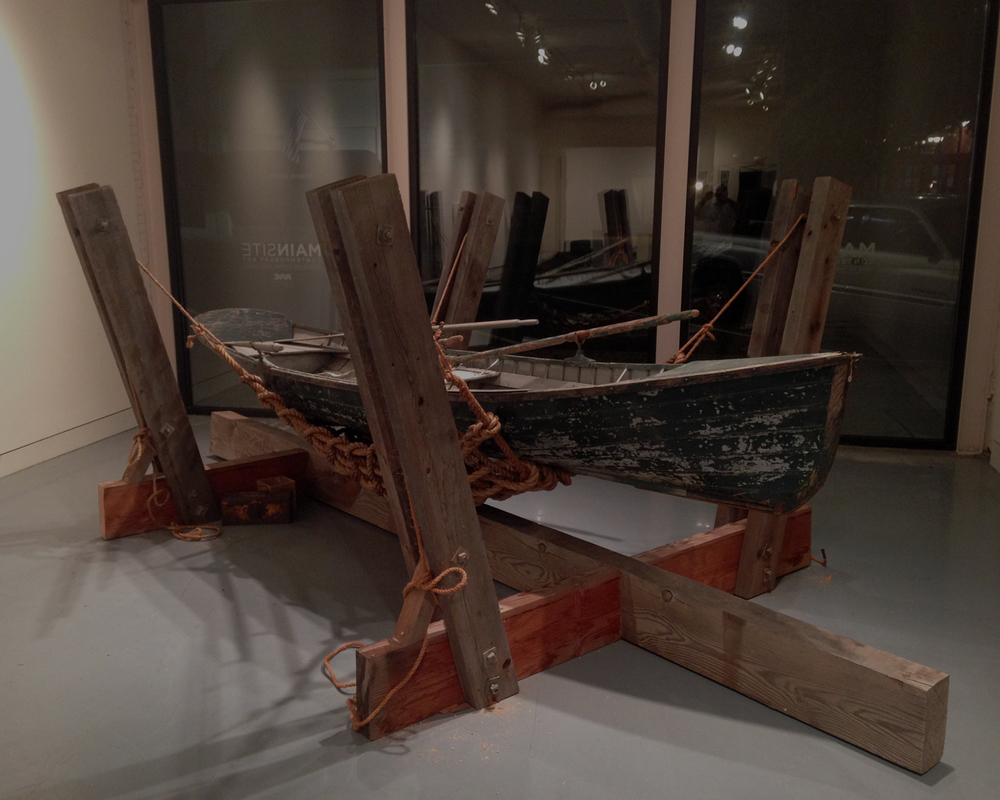
Wooden Fish at Mainsite Installation
Wooden Fish by Donald G. Longcrier opens at Mainsite Contemprorary Art in Norman, Oklahoma on Friday, October 11. The exhibition runs through November, 9.
Opening Reception: Friday, October 11, 6:00 - 10:00 pm.
Artist's Talk: Thursday, November 7, 7:00 pm.
Closing Reception: Friday, November 8, 6:00 - 10:00 pm.
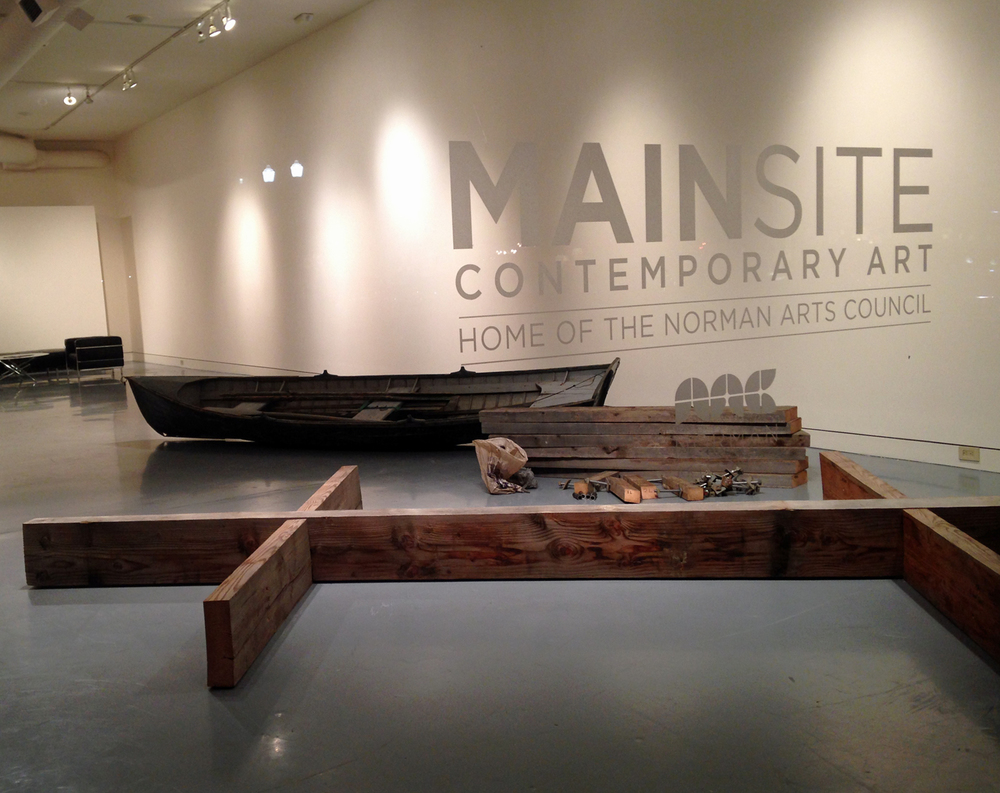
Installing Untitled (Whitehall Skiff)
Art Now 2013 at City Arts Center
Curator Talk: January 28, 6:00pm

Untitled (Chalk Box), 60" H. x 60" W. x 6.5"D., Acrylic and encaustic on wood with objects
2013 Guest Curator: Louise Siddons
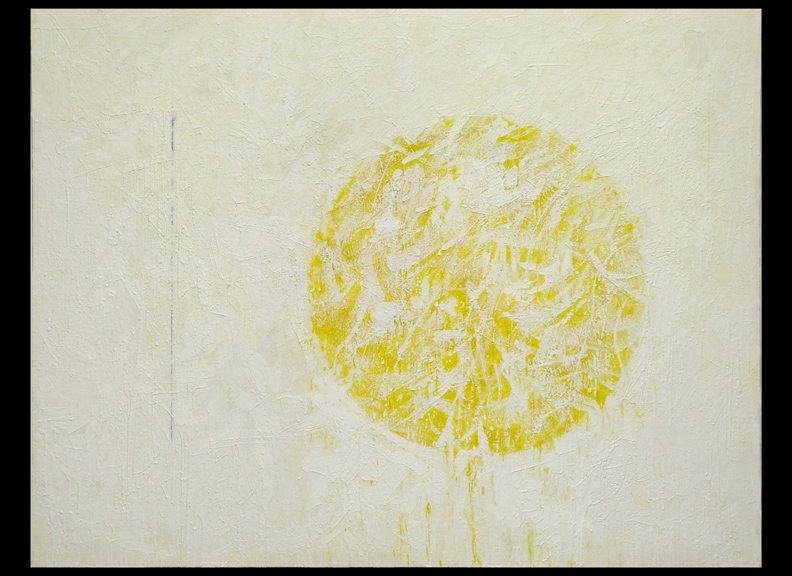
Untitled (Chalk Line), 60" H. x 78"W., Acrylic and encaustic on wood, Carpenter's chalk
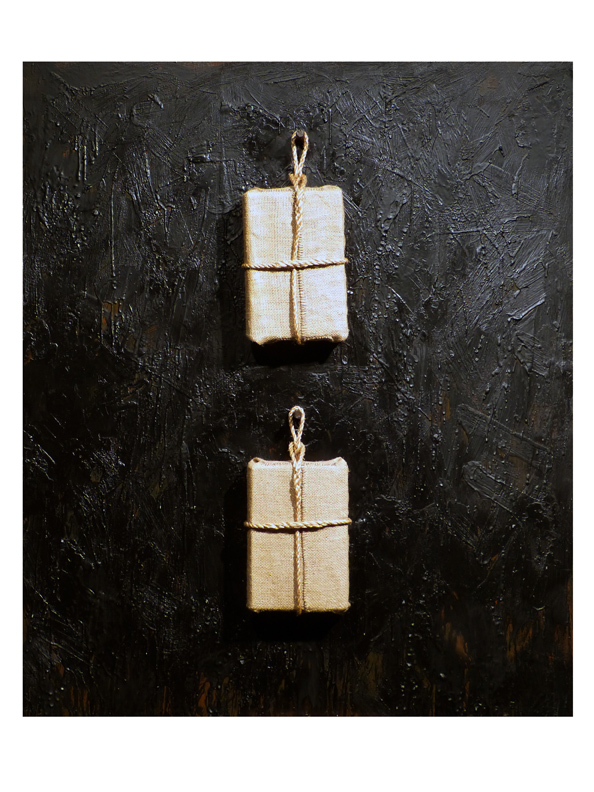
Untitled (Fundamental Principles), 44" H. x 37"W. x 1"D., Acrylic and encaustic on wood with objects
FISH 2012 from Hooked:
FISH 2012 From the Curator, Cedar Marie
FISH 2012 Press Release
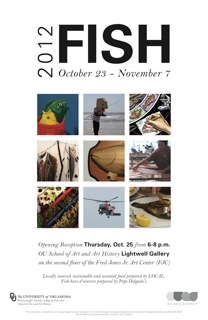
FOR IMMEDIATE RELEASE
CONTACT: Cedar Marie, cmarie@ou.edu
CONTACT: Jessica Upson, jess@ou.edu
OU School of Art & Art History
(405) 325-2691
OU Art Exhibition Offers Glimpse into the Culture of Fishing
NORMAN, OKLA. (October 12, 2012) – The University of Oklahoma School of Art & Art History and the Lightwell Gallery present FISH, a multimedia art exhibition curated by OU professor and artist Cedar Marie. The exhibition explores a concern for one of the planet’s most diminishing food resources and includes sculpture, photography, video, and painting from U.S. and international artists.
“FISH offers the public an opportunity to consider how we tend to our relationships with the food we grow, harvest, and consume,” said Cedar Marie. Artwork represented in this exhibition includes pieces from Bangkok-based photographer Jane Iverson, whose work documents the simplicity and fragility of Asian fishing culture, and Texas-based artist Christine Foerster who creates interactive installations based on green design. Other artists address Hurricane Katrina’s aftermath, the Deepwater Horizon Oil Spill, American kitsch, and patriotism.
Coinciding with the exhibit, The School of Art & Art History welcomes visiting artist and Guggenheim Fellowship recipient Ray Troll. Troll will give a public lecture on October 30 at 10:30 a.m. in the Mary Eddy and Fred Jones Auditorium at the red Jones Jr. Museum of Art.
Ray Troll bases his quirky aquatic images on the latest scientific discoveries and brings a street-smart sensibility to the worlds of ichthyology & paleontology. “His paintings and drawings are also a delightful commentary on the fishy behavior of humans,” said Cedar Marie. His unique blend of art and science has reached a wide range of audiences in major shows at the Smithsonian, the California Academy of Sciences in San Francisco, the Oregon Coast Aquarium in Newport, and the Denver Museum of Nature and Science. Troll received a Gold Medal for Distinction in the Natural History Arts by the Academy of Natural Sciences, and is the art director for the Miami Museum of Science’s Amazon Voyage traveling exhibit. An exhibition based on his book “Cruisin’ the Fossil Freeway”–written in collaboration with Dr. Kirk Johnson–is currently on tour.
FISH is on display from Tuesday October 23 through Wednesday November 7, 2012 in the OU School of Art & Art History’s Lightwell Gallery. A free, public reception will be held on Thursday, Oct. 25 from 6-8 p.m., with locally sourced, sustainable and seasonal food donated by LOCAL of Norman, Oklahoma, and fish hors d’oeuves prepared by Pepe Delgaldos.
The university of Oklahoma’s School of Art & Art History is located in the Fred Jones Art Center (FJC), 520 Parrington Oval, in the OU Arts District. The Lightwell Gallery is located on the second floor and is open from 8 a.m-5 p.m., Monday through Friday and is closed on holidays and weekends. For more information on the University of Oklahoma School of Art & Art History please visit art.ou.edu.
For special accommodations call 405.325.2691 or email art@ou.edu.
###
Preparing Native Trout Paintings for FISH 2012
Preparing two of the Native Trout paintings for the upcoming FISH 2012 Exhibition to be held in the Lightwell Gallery at the University of Oklahoma. FISH will run October 23 through November 7, 2012.
The paintings to be exhibited will be Westslope Cutthroat Trout, Oncorhynchus clarki lewisi and Apache Trout, Oncorhynchus gilae apache. The paintings are acrylic and encaustic on wood panels and measure 54" H x 108" W.

Apache Trout, Oncorhynchus gilae apache. Acrylic and encaustic on wood, 54" H x 108" W. ©2007
On Left: Westslope Cutthroat Trout, Oncorhynchus clarki lewisi . Acrylic and encaustic on wood, 54" H x 108" W. ©2007
On Right: Apache Trout, Oncorhynchus gilae apache. Acrylic and encaustic on wood, 54" H x 108" W. ©2007
Front: Apache Trout, Oncorhynchus gilae apache. Acrylic and encaustic on wood, 54" H x 108" W. ©2007
Back: Westslope Cutthroat Trout, Oncorhynchus clarki lewisi . Acrylic and encaustic on wood, 54" H x 108" W. ©2007
FISH 2012 International Art Competition
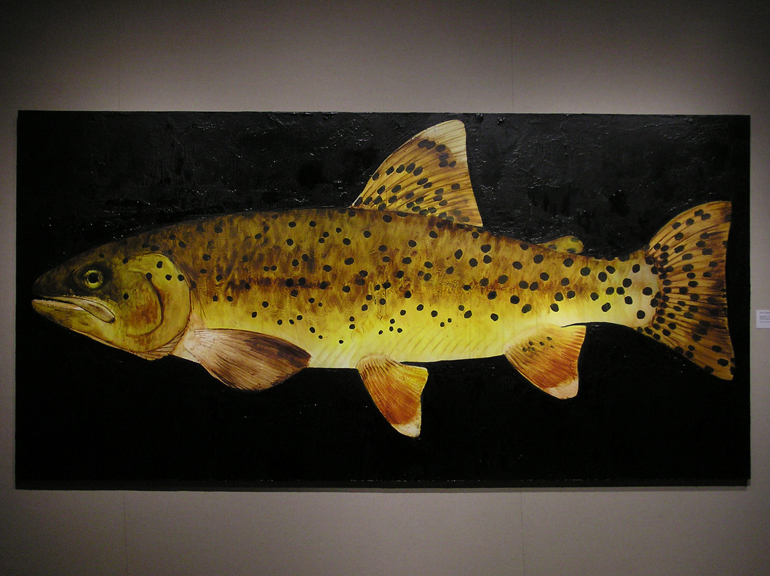
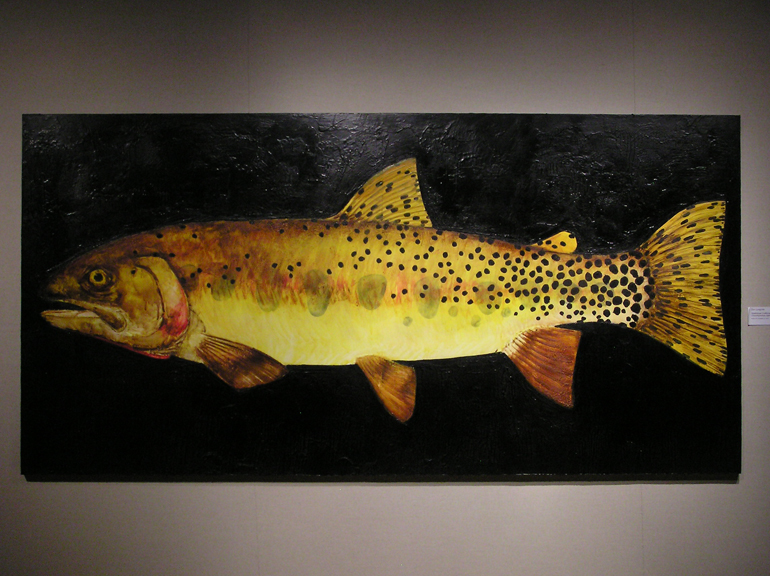
Exhibition: 23 Oct - 7 Nov 2012
The University of Oklahoma School of Art & Art History will host FISH 2012 International Art Competition in the Lightwell Gallery from October 23 to November 7, 2012. The exhibition will feature "artists who focus on themes that relate to the culture of fishing". According to the exhibition prospectus, the exhibition will explore a "broad range of interpretations...such as fishing as an economic lifestyle, the process of fishing, work and gender issues, conservation & politics, environmental habitats & sustainability, food quality & safety, fishing for subsistence, fisheries collapse, & community education."
Donald G. Longcrier to serve as Awards of Excellence Judge at 2012 Arts Festival Oklahoma
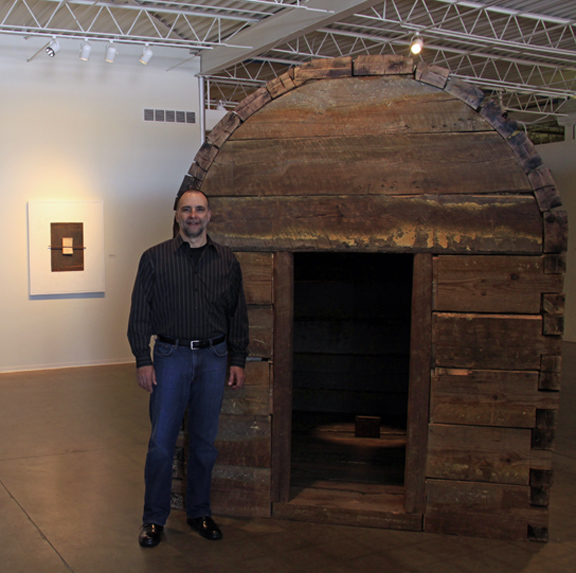
Oklahoma City University School of Visual Arts, Director of the Nona Jean Hulsey Gallery and Adjunct Professor of Art Donald G. Longcrier will serve as an Awards of Excellence Judge at the 2012 Arts Festival Oklahoma.
2012 Arts Festival Oklahoma, September 1-3,
Oklahoma City Community College
http://www.occc.edu/afo/index.html
Native Trout of the American West
Native Trout of the American West or the big fish paintings!
A few years ago, one of my large-scale, encaustic paintings of native trout was installed in the contemporary art section of an exhibition of Western Art. Someone asked me, "What the hell are you doing in an exhibition of Western Art?" I think the answer to that question lies at the heart of the paintings from Native Trout of the American West at the Nona Jean Hulsey Gallery, Norick Art Center at Oklahoma City University in 2007.
These paintings represent a discussion of some of the West's most pressing contemporary issues, the first and foremost of which, will always be water and its management. One cannot speak about the West without discussing public land and private ownership, environmental and economic concerns such as mining and farming arid land.
Golden Trout Creek Golden Trout, Oncorhynchus mykiss aguabonita
Acrylic and encaustic on wood, 54" H. X 108" W., 2007
The native trout species I have chosen to paint were once common to most rivers and streams from the Pacific Ocean to the Rockies, from Mexico to Canada. Now, they number a fraction of their original population and many are only found inhabiting tiny, isolated headwater streams in small areas of their original range. Where some of these fish once grew to legendary size--Lahontan cutthroat trout were reported to reach sixty pounds--many now survive as six to ten inch specimens.
Wild, native trout populations are indicative of the environment in which they live, and reflect the choices we have made and will be making regarding the use of these watersheds. Native trout habitat has been affected by grazing, farming, and irrigation needs. Blocked by dams, spawning runs have ceased. Many native species have been displaced by the introduction of non-native species.
Fortunately, recovery efforts supported by, private organizations, government, and tribal agencies are underway throughout the region.
Coastal Rainbow Trout, Oncorhynchus mykiss irideus
Acrylic and encaustic on wood, 54" H. X 108" W., 2007
A simpler explanation of the paintings might have to do with the fact that research for the work requires me to spend as much time as possible, chasing after wild native fish in remote but beautiful locations. Regrettably, the time spent on research is never enough. But, fishing is all about hope*
Native Trout of the American West, Nona Jeane Hulsey Gallery,
Norick Art Center, Oklahoma City University, Installation view, 2007
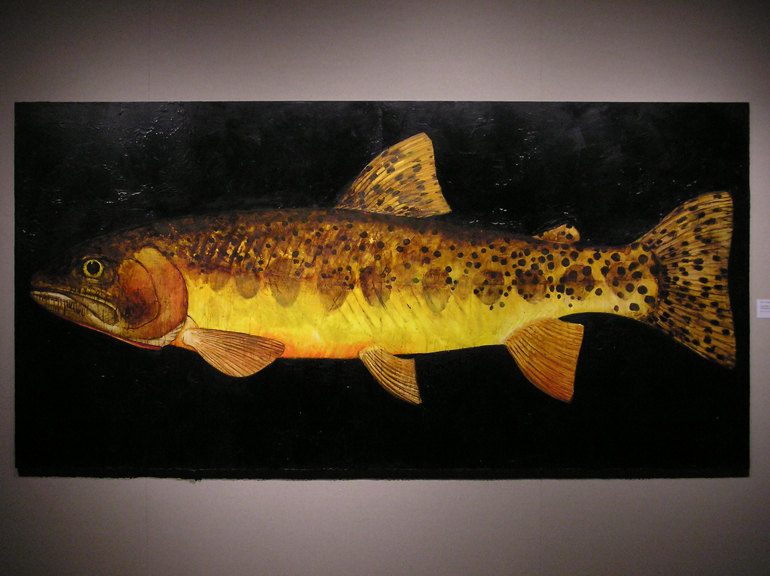
Colorado River Cutthroat Trout, Oncorhynchus clarki pleuriticus
Acrylic and encaustic on wood, 54" H. X 108" W., 2007
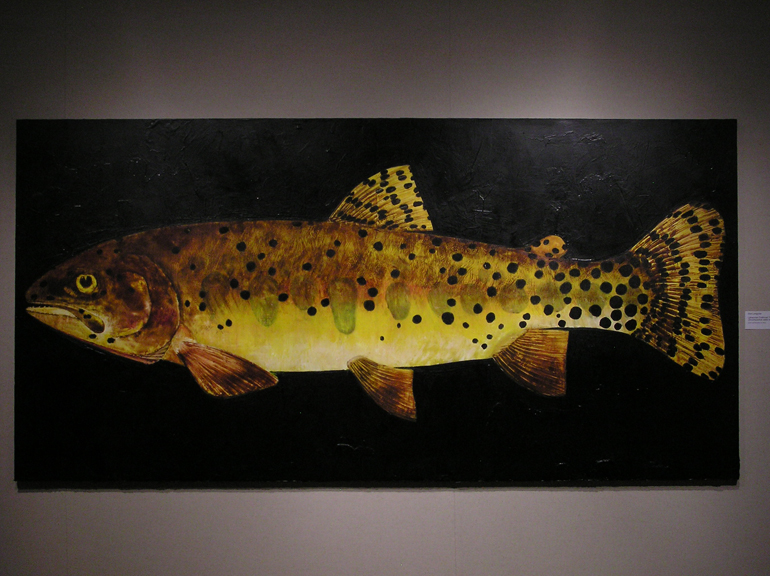
Lahontan Cutthroat Trout, Oncorhynchus clarki henshawi
Acrylic and encaustic on wood, 54" H. X 108" W., 2007

Westslope Cutthroat Trout, Oncorhynchus clarki lewisi
Acrylic and encaustic on wood, 54" H. X 108" W., 2007
Native Trout of the American West, Nona Jeane Hulsey Gallery,
Norick Art Center, Oklahoma City University, Installation view, 2007
Apache Trout, Oncorhynchus gilae apache
Acrylic and encaustic on wood, 54" H. X 108" W., 2007
*From: Native Trout of the American West, Donald G. Longcrier, 2007



